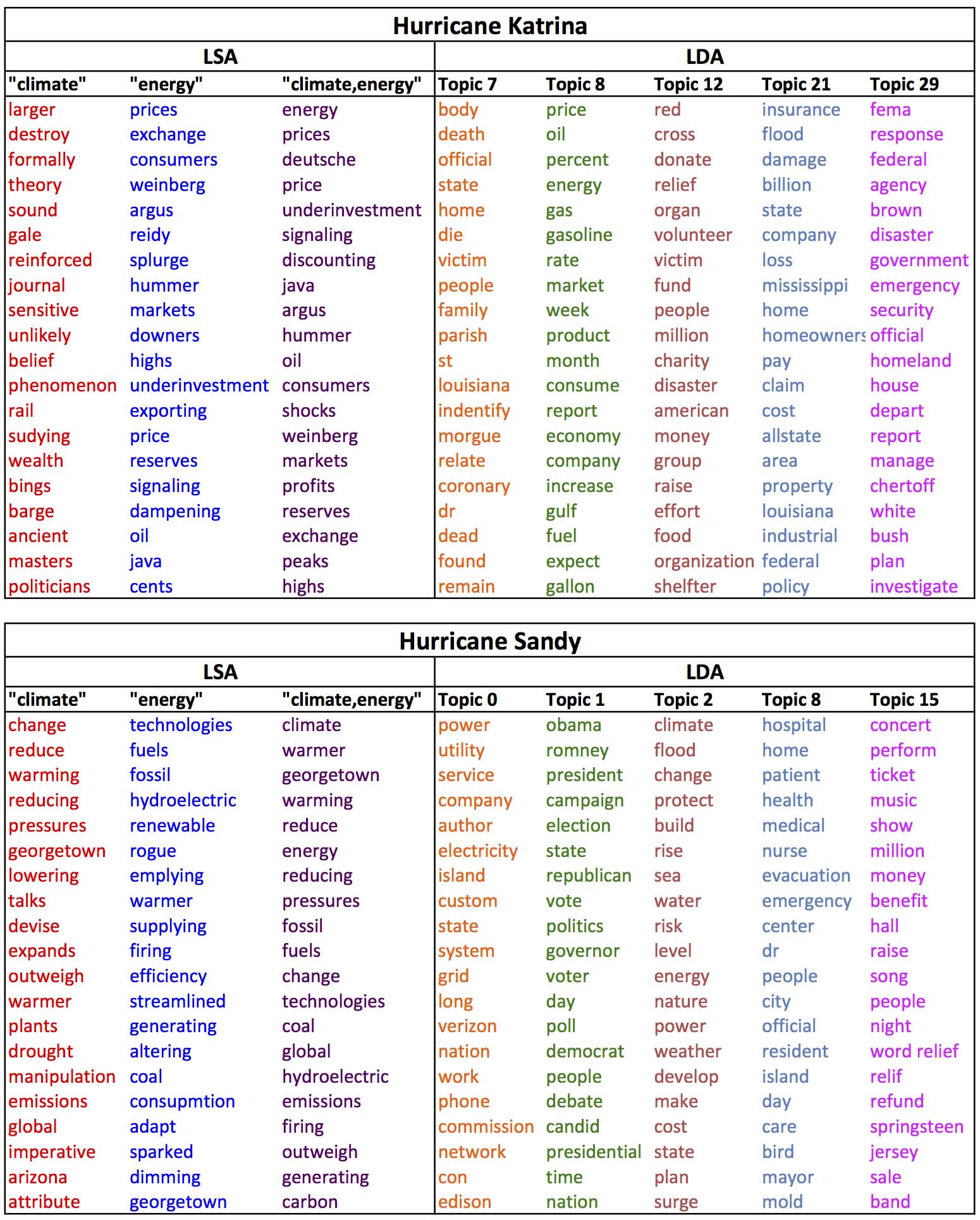Climate change is real, and that’s just science. But if we aren’t feeling climate change on a day-to-day basis, then how do we know it’s really happening? The problem is especially challenging considering that weather in the U.S. has actually become more pleasant over the last few decades.
Behavioral economics studies have repeatedly shown that human beings respond best to tangible consequences. One such consequence of climate change is the increase in severity and frequency of natural disasters (TIME, nature). Natural disasters can be extremely inconvenient, especially when they destroy our energy infrastructure and leave us with no electrical power. How are we supposed to post sarcastic tweets without electricity?
In a study using newspaper articles about Hurricanes Katrina and Sandy, we ask: Did the news media highlight the consequences of climate change in post-hurricane reporting? Was there a link between these consequences and energy system vulnerability? The news media has the ability to both shape and reflect public perceptions of climate change. It has been shown that news media reports tend to agree with the scientific consensus on climate change, and display the facts by avoiding complex scientific language.
We collected 1039 articles about Hurricane Sandy and 3100 articles about Hurricane Katrina. Don’t worry, we didn’t actually read them ourselves. Instead, we asked a computer to read them using two topic modeling techniques:
- Latent Semantic Analysis (LSA), which uses singular value decomposition to reduce a term-document matrix to latent semantic space, and
- Latent Dirichlet Allocation (LDA), a probabilistic bayesian modeling technique which defines each hidden topic as a probability distribution over all of the words in the corpus. A topic model uses word frequencies within a corpus to assign one or more topics to each article.
Using LSA, we can determine which words in our corpus of articles are most similar in meaning to a given query of one or more words. For each corpus, we determine which words are closest in meaning to the queries “climate”, “energy”, and “climate,energy”. Using LDA, we define the corpus over a given number of topics. Each topic is a distribution of words, and each article is then defined as a distribution over topics. The following table gives the results of LSA querying and several LDA topics for each hurricane.

Interestingly, the words most related to “climate” in the Hurricane Katrina table represent climate theory and underdeveloped research. Hurricane Katrina took place in 2005, before there was any solid research confirming that climate change was impacting the severity of hurricanes. This list does not contain words relating to energy systems, and does not focus on the science or consequences of climate change. The words most related to “energy” are about the energy market and economy. Hurricane Katrina’s damages caused energy prices to soar. Finally, the “energy, climate” list closely resembles the energy list. It focuses on energy prices and not at all on climate change or infrastructure vulnerability, indicating that discussions about climate change, energy, and power outages were infrequent and independent of one another within media reporting following Hurricane Katrina. The energy topic given by LDA analysis confirms what we saw in LSA. The lack of a climate change topic in our LDA analysis indicates that climate change was not a prominent topic of conversation following Hurricane Katrina.
By 2012, when Hurricane Sandy hit, climate science was much more developed and links between climate change and Hurricanes had been explored in greater detail. In print media articles, we see words relating to climate change and energy in all three LSA lists. Most importantly, Topic 2 in LDA represents climate change, and it also includes words relating to both energy consumption and energy system vulnerability.
Our analysis suggests that in the time between Hurricanes Katrina and Sandy, there was shift in public discourse surrounding climate change and energy. To read the entire analysis, see our paper in the Journal of Environmental Studies and Sciences, or on the arXiv.

